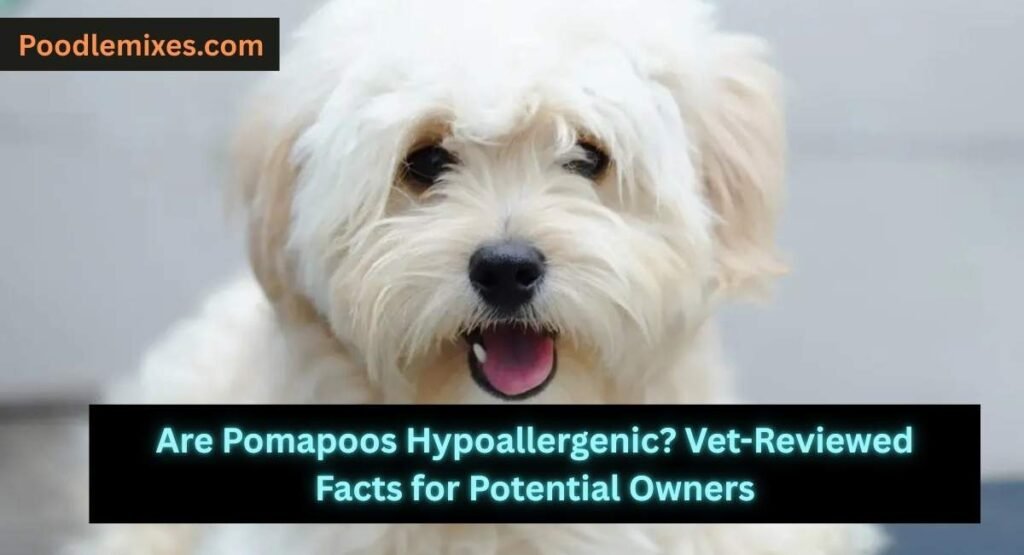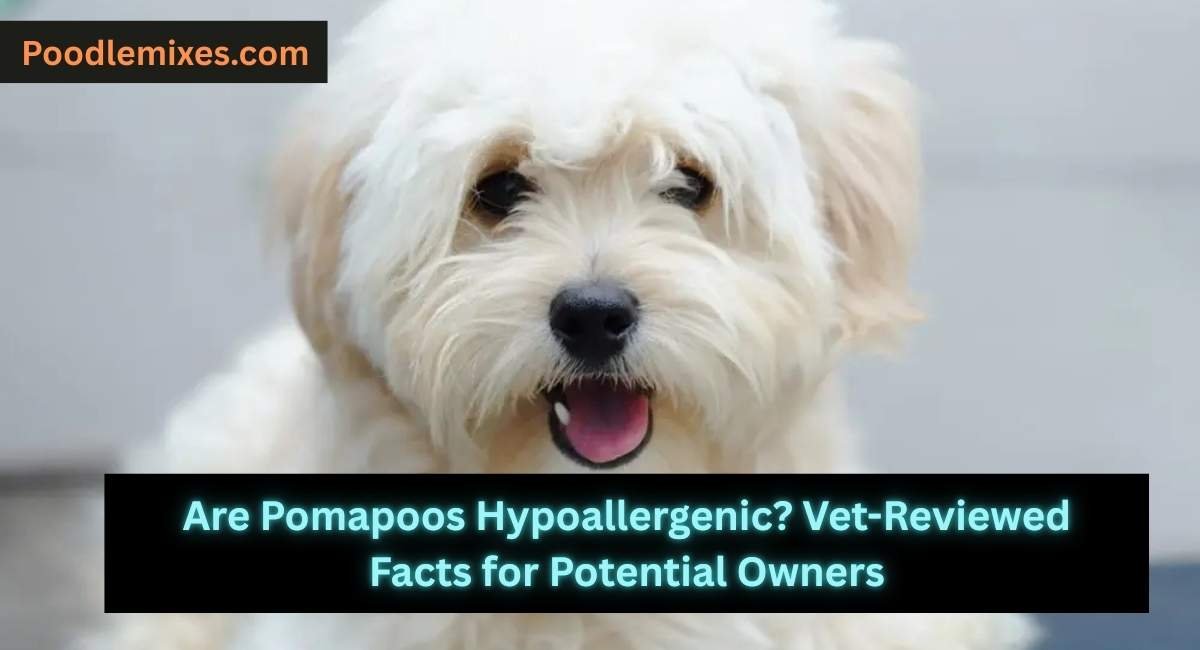Are Pomapoos hypoallergenic? This adorable cross between a Pomeranian and a Toy or Miniature Poodle is a popular choice for those seeking a small, companionable dog. For allergy sufferers, the promise of the Poodle’s low-shedding coat is a significant draw. However, it’s vital to start with the definitive fact from authorities like the American College of Allergy, Asthma, and Immunology: no dog is 100% hypoallergenic. While Pomapoos can be a wonderful option for many with mild sensitivities, their suitability hinges on understanding the specific blend of their Pomeranian and Poodle heritage. This guide will explore the reality of allergies and life with a Pomapoo.
Are Pomapoos Hypoallergenic?
No, Pomapoos are not completely hypoallergenic, but they are often an excellent choice for people with mild to moderate allergies. This is primarily due to the strong influence of the Poodle parent, which typically contributes a low-shedding coat. However, the Pomeranian parent has a double coat that sheds moderately, introducing some variability. As the American Lung Association explains, allergens are proteins in dander, saliva, and urine. A Pomapoo with a Poodle-dominant coat will shed very little, spreading less dander, but will still produce allergens. Therefore, they are best described as low-shedding and allergy-friendly, but not allergen-free.

What Does Hypoallergenic Really Mean in Dogs?
The term “hypoallergenic” can be misleading. In practical terms, it indicates a dog that is less likely to cause an allergic reaction, not one that is incapable of doing so. The American Kennel Club (AKC) classifies Poodles as hypoallergenic because of their predictable, non-shedding coat.
It’s important to balance this with scientific evidence. A study in the Journal of Allergy and Clinical Immunology found that homes with dogs labeled “hypoallergenic” did not have consistently lower allergen levels. This highlights that individual sensitivity and a specific dog’s allergen production are critical factors, especially in a mixed breed like the Pomapoo where coat type can vary.
Pomapoo Coat Types and Allergen Impact
A Pomapoo’s coat can range from soft and fluffy to tight and curly, depending on which parent’s genes are dominant. This directly impacts their shedding and allergen spread.
The following chart outlines the common Pomapoo coat variations:
| Coat Type | Shedding Level | Dander Control | Allergy Risk (Relative) |
|---|---|---|---|
| Curly (Poodle-Dominant) | Very Low | Excellent | Lower |
| Wavy/Soft (A Balanced Mix) | Low | Good | Low |
| Fluffy/Double-Coat (Pomeranian-Dominant) | Moderate to High | Fair | Medium to Higher |
As VCA Animal Hospitals notes, a curly, single coat is most effective at trapping dander. A fluffy, double coat like a Pomeranian’s will shed more, especially during seasonal changes, releasing more dander into the environment. Prospective owners should aim for a Pomapoo with a curlier coat.
Allergy Considerations for Pomapoo Owners
The Pomapoo’s very small size is a major advantage for allergy management. A smaller dog has less skin surface area, which can mean less overall dander production compared to a larger breed.
Success depends on the individual. Research from the National Institutes of Health (NCBI) shows that allergen levels vary from dog to dog. For people asking “are Pomapoos hypoallergenic,” the answer is positive, but with a caveat. Their small size and often low-shedding coats make them a good bet, but spending time with the specific dog is the best way to gauge your reaction.
Tips to Reduce Allergic Reactions With a Pomapoo
Managing a Pomapoo’s coat is essential for minimizing allergens. Their small stature makes some tasks easier.
- Regular Grooming is Essential: Brush your Pomapoo several times a week to prevent mats and remove loose hair. Schedule professional grooming every 4-6 weeks. The AKC emphasizes that regular grooming is critical for maintaining the health of a non-shedding coat.
- Frequent Baths: Their small size makes bathing easy. A bath every 3-4 weeks with a gentle shampoo can significantly reduce allergens on the skin and coat.
- Wipe Paws and Face: Use a damp cloth to wipe your Pomapoo’s paws and face after coming inside to remove pollen and dried saliva.
- Invest in a HEPA Air Purifier: A small, high-quality HEPA air purifier in the room where the dog spends the most time can effectively capture airborne dander.
- Wash Bedding Frequently: Wash your Pomapoo’s small bed, blankets, and any soft toys in hot water at least once a week.
Other Poodle Mixes Often Considered “Hypoallergenic”
Pomapoos are a part of the group of tiny toy Poodle mixes. Here’s a quick comparison:
| Breed | Typical Coat | Shedding Level | Allergy Friendliness* |
|---|---|---|---|
| Pomapoo | Soft/Curly | Low | High |
| Maltipoo | Silky/Curly | Very Low | Very High |
| Cavapoo | Wavy/Curly | Low | High |
| Yorkipoo | Silky/Wavy | Very Low | High |
*Friendliness = relative chance of being allergy-manageable. Pomapoos are a good choice, but may have slightly more variability than a Maltipoo.
FAQ Section (People Also Ask)
Do Pomapoos shed a lot?
Most Pomapoos shed very little, especially if they inherit the Poodle’s coat. However, if a Pomapoo has a more Pomeranian-like double coat, it will shed moderately. Generally, they are considered a low-shedding breed.
Are Pomapoos good for people with severe allergies?
They can be a good option due to their small size and typically low-shedding coats. However, because of the potential for Pomeranian-like coat inheritance, someone with severe allergies should insist on a curly-coated Pomapoo (ideally an F1B generation) and spend extended time with the dog first.
What is an F1B Pomapoo?
An F1B Pomapoo is the offspring of an F1 Pomapoo (50% Pomeranian, 50% Poodle) and a Poodle. This results in a puppy that is 75% Poodle. F1B Pomapoos are the best choice for allergy sufferers as they are almost guaranteed to have a non-shedding, curly coat.
Conclusion
So, are Pomapoos hypoallergenic? While the term isn’t perfectly accurate, the Pomapoo is undoubtedly one of the better small breeds for allergy-prone individuals. Their combination of minimal shedding (in most cases) and very small size makes them a manageable and joyful companion for many. The key to success lies in selecting a dog with a Poodle-dominant coat, committing to a consistent grooming schedule, and maintaining a clean home environment. For those willing to take these steps, a Pomapoo can be a wonderful, allergy-friendly addition to the family.
